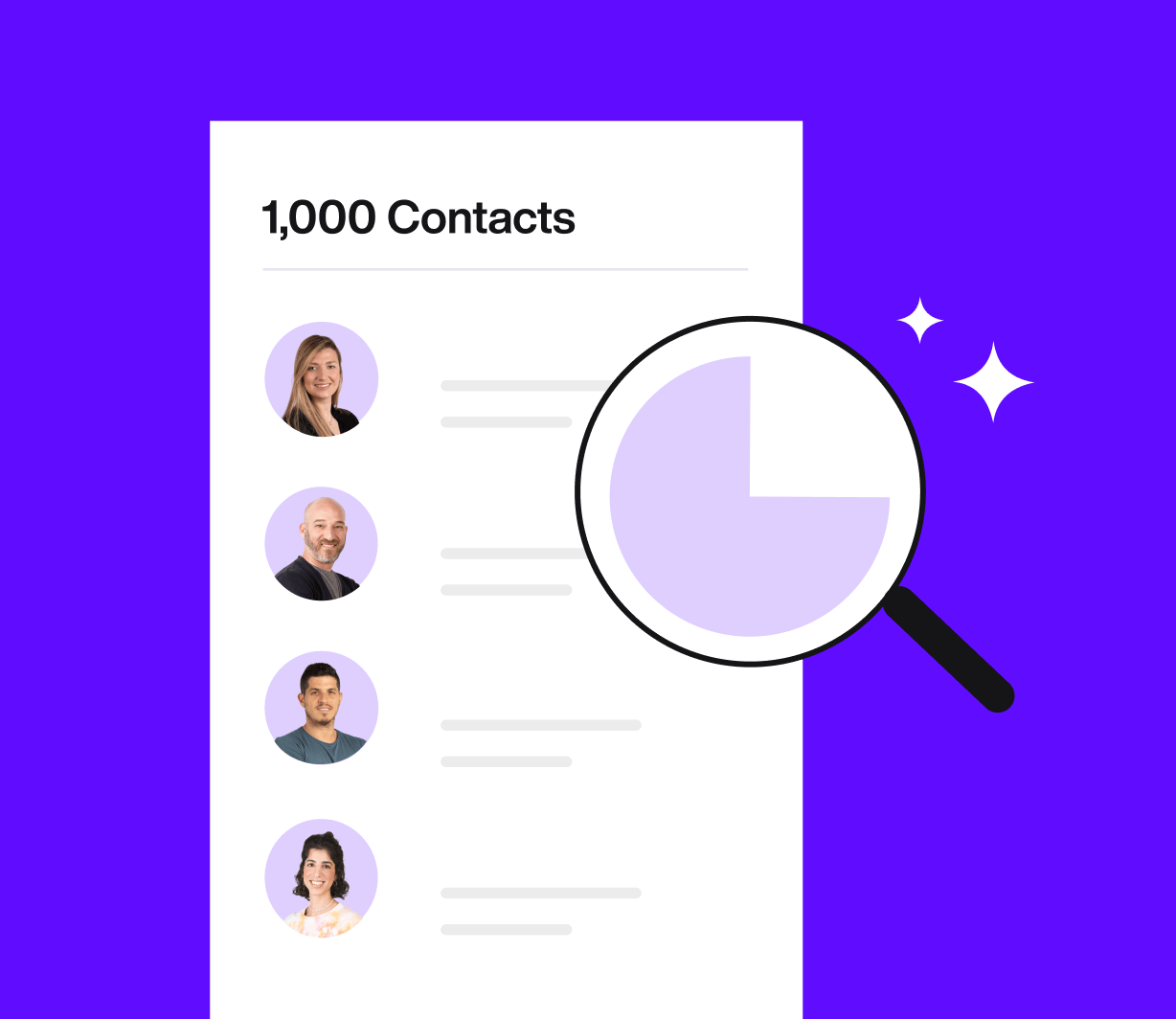Sales has a real efficiency problem: reps spend only 28% of their week selling. And it’s a trend that’s only gotten worse over the last few years, not better. Six years ago, that percentage was 34%, meaning that salespeople spend 6% less time selling than just half a decade ago. Every salesperson wants to sell […]
Sales has a real efficiency problem: reps spend only 28% of their week selling. And it’s a trend that’s only gotten worse over the last few years, not better. Six years ago, that percentage was 34%, meaning that salespeople spend 6% less time selling than just half a decade ago.
Every salesperson wants to sell more (and better). To help, we’re starting a blog series to give you tips and advice to make every step of the sales process more efficient so you can do more with less.
We’re starting off with a beast of a topic: lead management. From lead gen to prioritization and follow-up, there’s a lot to do and not a lot of time to get it done. Here’s some expert advice we’ve sourced to help you move things along in your lead management process.
Speed up lead generation and qualification
Using automated processes and intelligent tools for lead generation and qualification lightens the workload so you have more time to do what you do best – selling.
2 out of every 5 sales reps spend more than half their time just trying to find leads. You’d think inbound leads would be the perfect solution to all that outbound lead gen. After all, who doesn’t love a lead that comes to you instead of the other way around? But the reality is a little more complicated.
On average, only 27% of the leads that come from marketing are qualified. That leaves a lot of the burden of generating and qualifying leads on the shoulders of sales. It doesn’t have to be all doom and gloom, though – there are ways to make this process faster and more efficient.
Tools to automate lead generation and qualification
One of the simplest ways to make lead generation more efficient is using the right tools. Take, for example, sales intelligence platforms. A high-quality B2B database is good for more than just getting you the contact information of a prospect you saw on LinkedIn. You can also get valuable sales intel including attributes about the leads and their company which can help you qualify and prioritize.
Lead gen tools can help you with qualifying those inbound leads, too, making it much faster to find that 27% who are the right fit.
An easy, hands-off way to pre-qualify the leads that come through your website is through a chatbot conversation flow. Based on their answers to the chatbot, they can get connected to a live BDR, routed to a self-service option, or sent directly to the team that nurtures them.
What about leads that come through web forms? A lot of times, the few details you get from inbound forms are basically crumbs… not really enough to go on. Someone’s name, company, and email don’t tell you much about if they even qualify, let alone if they’re ready to buy. Chasing every lead that comes in wastes time that could be spent nurturing leads who are more likely to convert.
There’s a quick fix: data enrichment. Instead of spending time manually researching inbound companies or reaching out to every single lead, use a tool that can quickly add context to the inbound data to make it more actionable. With enrichment, you can take the minimal information you get from inbound leads and squeeze out some more details like job title, company size, revenue, and location to help you qualify efficiently.
Pre-qualifying leads through one (or all of) these automated processes takes the load off your hands and gives you more time to do other sales activities.
Tackle lead prioritization like a pro
Too many leads and too little time sounds like a good problem to have, but in reality, it can drag down your sales efficiency.
50% of leads –even the qualified ones – aren’t ready to make a purchase just yet. Chasing after leads who aren’t ready to buy can waste a lot of your time. How can you efficiently prioritize your leads so you know who to chase first?
Here are a few ways to decide which leads should go to the top of the list:
- Inbound leads go higher than outbound – they show higher intent to purchase.
- Does the prospect have a deadline for information or follow-up? Schedule your next steps based on who has the earliest deadlines.
- Who’s the most responsive? They’re invested, so keep them high on the list.
- Which job titles tend to be the highest converting? Which company and prospect qualities best fit your ideal customer profile? Push those to the top.
- Use buying signals:
- Intent data shows which companies are actively researching a topic.
- Tech stack changes can mean the target company is making big moves and is ready to purchase.
- Who’s new to a role? Recent job changes can imply motivation to purchase and make an impact.
- Recent funding means more potential budget.
Prioritization is a dynamic process. Often, the best way to set your priorities is to layer these criteria on top of each other. The greater the overlap for a particular lead, the higher that lead goes on the priority list.
Lead nurture for future wins
Remember that statistic we just shared about 50% of your leads not being ready to buy? That means you need to find a way to keep half the leads you’re managing on the line a little longer until the time is right. Lead nurturing can take up a lot of time if you do it inefficiently, and while it’s important to keep those prospects interested, your time can be better spent chasing after those hot leads.
A simple way to make things more efficient is to automate your follow-up. Set automated cadences using a tool that schedules out emails to your segmented lists. To make that even easier, take the time to create templates and snippets to mix and match in future cadences. That way, you’re not rewriting it all every time you need to set up a nurture campaign.
Coordinate with your marketing team, too – they can offer even more ways to keep your brand and company top of mind. Share your lead information with marketing so they can target lead companies with ad campaigns. See if there are ongoing email campaigns that leads can be added to so they have a consistent reminder in their inbox that’s not just a sales email.
Another efficiency tip? Don’t put all your eggs in one follow-up basket. Embrace the multi-channel approach. You don’t want to rely on one method when it might not work well for the customer. You could be spending time making call after call when they’re actually super responsive on social media. Connect and engage with them from time to time on LinkedIn in addition to sending emails and making calls. Multi-thread your follow-up to cover the most ground as quickly as possible.
How to manage your time for efficient lead management
Efficiency isn’t all about just the tools and the channels. It’s also in how you manage your tasks. We suggest a few small adjustments to how you schedule your time for quick efficiency wins.
Tackle tasks by the time it takes to complete them. If there are leads who only need a small, one- to three-minute task to move them to the next stage, knock those out ASAP. You could even schedule a block on your calendar once a week (or every day, depending on your lead volume) to spend 30 minutes or an hour completing those small but important tasks.
Speaking of scheduling out chunks of time on your calendar, take a look at your call blocks. Are you wasting time calling customer after customer who doesn’t pick up? If you have data about when certain demographic groups of customers pick up most often, create call blocks around that information.
Even without that level of insight, you can optimize your call block time. For instance, dedicate your early morning call block to all of your customers in time zones ahead of you, and your afternoon call block to the customers who work a few time zones behind. It will only take a few minutes to sort out your leads based on location – time well spent when you can guarantee a better connect rate during your call blocks.
Summary: your lead management toolkit
The bottom line with efficiency: anything you can do to save time, group processes, and work smarter instead of harder… do it.
If it wasn’t clear already, our main message here is to automate what you can. Using lead management tools is key to turning clunky, manual processes into smooth workflows.
To sum up the tool types we mentioned throughout the post, here are a few to consider for your toolkit:
- CRM – if you don’t already have a customer relationship management system, you’re definitely spending too much time on manual processes. If you need something easy and inexpensive, try something like Hubspot.
- Sales engagement platforms – tools like Outreach and SalesLoft help you automate follow-up and gain important insights about how prospects engage with your nurture campaigns. They can also help you manage and track tasks – a key to efficiency.
- Sales intelligence platforms – inbound is great, but sometimes you have to go outbound, too. Make it quick by using a data partner who can show you decision-makers that fit your ideal customer profile. And these can help with inbound leads too. Look them up in your sales intelligence platform and get valuable sales intel that can help you qualify and prioritize.
- Data enrichment – get more out of your data so you can make informed decisions that increase efficiency. This can also be the basis for lead scoring and routing as well as territory management.
For an even greater boost to efficiency, try a tool that offers prospecting, enrichment, and engagement without a drawn-out onboarding process. Lusha cuts out the extra fluff so you can directly contact decision-makers within minutes of starting. The best part? You can start for free. Sign up today.



